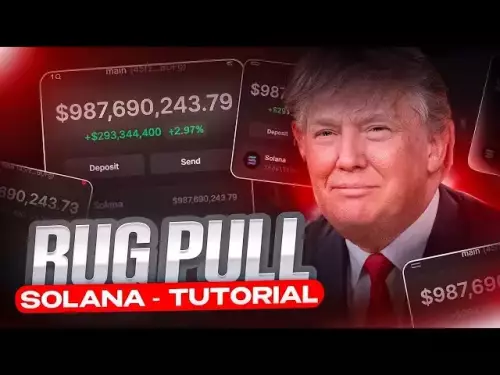-
 bitcoin
bitcoin $112148.28 USD
-1.99%% -
 ethereum
ethereum $4164.93 USD
-3.05%% -
 tether
tether $1.00 USD
0.00%% -
 xrp
xrp $2.82 USD
-2.26%% -
 bnb
bnb $979.53 USD
-4.98%% -
 solana
solana $216.24 USD
-6.53%% -
 usd-coin
usd-coin $0.9996 USD
-0.06%% -
 dogecoin
dogecoin $0.2373 USD
-3.68%% -
 tron
tron $0.3402 USD
0.51%% -
 cardano
cardano $0.8139 USD
-4.26%% -
 hyperliquid
hyperliquid $46.13 USD
-6.28%% -
 chainlink
chainlink $21.43 USD
-2.55%% -
 ethena-usde
ethena-usde $1.00 USD
0.16%% -
 avalanche
avalanche $33.11 USD
5.48%% -
 sui
sui $3.33 USD
-4.30%%
Breaking through the upper track of the Bollinger Band is overbought? Can you take more when the callback is at the midline?
When a cryptocurrency breaks the upper Bollinger Band, traders often wait for a callback to the midline to buy, but this strategy requires careful risk management.
Jun 02, 2025 at 11:07 am

The Bollinger Bands are a popular technical analysis tool used by traders to gauge the volatility and potential price movements of cryptocurrencies. The bands consist of a middle line, which is typically a simple moving average, and two outer bands that are standard deviations away from the middle line. When the price of a cryptocurrency breaks through the upper track of the Bollinger Band, it often signals that the asset might be overbought. However, the question remains whether it's a good strategy to take more positions when the price callbacks to the midline.
Understanding Bollinger Bands
Bollinger Bands were developed by John Bollinger in the early 1980s. They are designed to provide a relative definition of high and low prices and to identify periods of high and low volatility. The middle band is usually a 20-day simple moving average (SMA), while the upper and lower bands are typically set two standard deviations away from the middle band.
The upper band represents a level at which the price is considered high, while the lower band represents a level at which the price is considered low. When the price breaks above the upper band, it is often interpreted as a signal that the asset is overbought, suggesting that a price correction might be imminent. Conversely, breaking below the lower band might indicate that the asset is oversold.
Interpreting an Upper Band Breakout
When the price of a cryptocurrency breaks through the upper Bollinger Band, it can be a sign of strong bullish momentum. However, it also raises concerns about the sustainability of the price movement. Traders often look for signs of a potential pullback or reversal when this occurs.
An overbought condition does not necessarily mean that the price will immediately reverse. It simply suggests that the asset may be due for a correction. The extent and duration of any subsequent pullback can vary widely, depending on market conditions and other influencing factors.
The Midline Callback Strategy
A common strategy among traders is to wait for the price to callback to the midline of the Bollinger Bands after it has broken through the upper band. The midline, being the 20-day SMA, represents a level of equilibrium in the market. When the price returns to this level, it can be seen as a potential buying opportunity, especially if other indicators confirm the bullish trend.
However, taking more positions when the price callbacks to the midline is not without risks. It requires careful consideration of other technical indicators and market conditions. Traders should look for additional confirmation signals, such as positive momentum indicators or bullish candlestick patterns, to increase the probability of a successful trade.
Assessing the Risks and Rewards
The decision to take more positions when the price callbacks to the midline after breaking through the upper Bollinger Band involves weighing the potential risks and rewards. On one hand, if the bullish trend continues, buying at the midline could lead to significant profits. On the other hand, if the price fails to resume its upward trajectory, traders could face losses.
Risk management is crucial in such scenarios. Traders should set clear stop-loss levels to limit potential losses and use position sizing to ensure that no single trade can significantly impact their overall portfolio. Additionally, diversifying across different assets can help mitigate the risk associated with any single trade.
Practical Application in Cryptocurrency Trading
To apply the midline callback strategy in cryptocurrency trading, traders can follow these steps:
- Identify the Bollinger Bands: Plot the Bollinger Bands on your chosen cryptocurrency's price chart. Ensure that the middle band is set to a 20-day SMA and the outer bands are set to two standard deviations.
- Monitor for an Upper Band Breakout: Watch for the price to break above the upper Bollinger Band. This could indicate that the cryptocurrency is entering an overbought condition.
- Wait for a Callback to the Midline: After the upper band breakout, wait for the price to pullback to the midline (the 20-day SMA). This pullback could present a buying opportunity.
- Confirm with Other Indicators: Before taking a position, confirm the potential trade with other technical indicators such as the Relative Strength Index (RSI), Moving Average Convergence Divergence (MACD), or bullish candlestick patterns.
- Execute the Trade: If all indicators align, enter a long position at the midline. Set a stop-loss below the midline to manage risk.
- Monitor the Trade: Keep an eye on the price movement and adjust your stop-loss and take-profit levels as necessary to lock in profits and limit losses.
Example of a Midline Callback Trade
Let's consider a hypothetical example to illustrate the midline callback strategy. Suppose the price of Bitcoin breaks above the upper Bollinger Band at $50,000. After the breakout, the price begins to pullback and eventually reaches the midline at $48,000.
- Identify the Bollinger Bands: The Bollinger Bands are plotted on the Bitcoin chart, with the middle band at $48,000.
- Monitor for an Upper Band Breakout: Bitcoin breaks above the upper band at $50,000, indicating a potential overbought condition.
- Wait for a Callback to the Midline: The price pulls back to the midline at $48,000.
- Confirm with Other Indicators: The RSI is at 55, indicating neutral momentum, and a bullish engulfing candlestick pattern forms at the midline.
- Execute the Trade: A long position is entered at $48,000 with a stop-loss set at $47,000.
- Monitor the Trade: The price resumes its upward movement, reaching $52,000, at which point the trader takes profits.
Frequently Asked Questions
Q: Can Bollinger Bands be used alone for trading decisions?A: While Bollinger Bands are a powerful tool, they are best used in conjunction with other technical indicators to increase the accuracy of trading signals. Relying solely on Bollinger Bands can lead to false signals and increased risk.
Q: How often should the Bollinger Bands be recalibrated?A: Bollinger Bands are typically set to a 20-day SMA and two standard deviations. These settings can be adjusted based on the trader's preference and the specific market conditions. However, frequent recalibration is not necessary unless there is a significant change in market volatility.
Q: Is the midline callback strategy suitable for all market conditions?A: The effectiveness of the midline callback strategy can vary depending on market conditions. It tends to work best in trending markets where the price is likely to resume its direction after a pullback. In range-bound markets, the strategy may be less effective.
Q: What other indicators can be used to confirm a midline callback trade?A: In addition to the RSI and MACD mentioned earlier, traders can also use the Stochastic Oscillator, the Average Directional Index (ADX), or volume indicators like the On-Balance Volume (OBV) to confirm a midline callback trade. Each of these indicators provides additional insights into market momentum and trend strength.
Disclaimer:info@kdj.com
The information provided is not trading advice. kdj.com does not assume any responsibility for any investments made based on the information provided in this article. Cryptocurrencies are highly volatile and it is highly recommended that you invest with caution after thorough research!
If you believe that the content used on this website infringes your copyright, please contact us immediately (info@kdj.com) and we will delete it promptly.
- XAUT, Gold, and the Fed: A New York Minute on Market Moves
- 2025-09-23 08:45:12
- Avalanche (AVAX) Bull Run: Is the Tide Turning?
- 2025-09-23 09:05:12
- Bitcoin, Ethereum, and the Price Increase Puzzle: What's Driving the Crypto Surge?
- 2025-09-23 08:25:12
- Pudgy Penguins Price Prediction: Breakout or Breakdown Ahead?
- 2025-09-23 06:45:14
- BetMGM Bonus: Lions-Ravens Monday Night Football Showdown!
- 2025-09-23 09:05:12
- Crypto Investment Heats Up: Pepeto vs. BlockDAG & Bitcoin Hyper
- 2025-09-23 06:25:14
Related knowledge

What are the benefits of simulated trading?
Sep 21,2025 at 08:18pm
Understanding the Role of Simulated Trading in Cryptocurrency Markets1. Simulated trading allows users to engage with cryptocurrency markets without r...
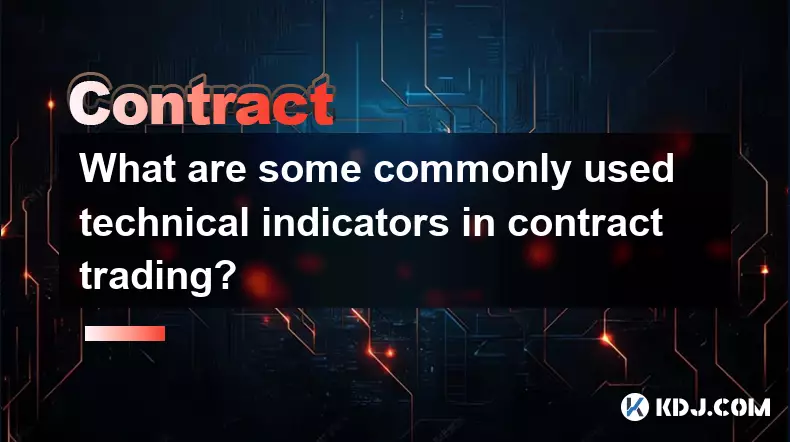
What are some commonly used technical indicators in contract trading?
Sep 19,2025 at 05:54pm
Popular Technical Indicators in Contract Trading1. Moving Averages (MA) are among the most widely adopted tools in contract trading. Traders use both ...
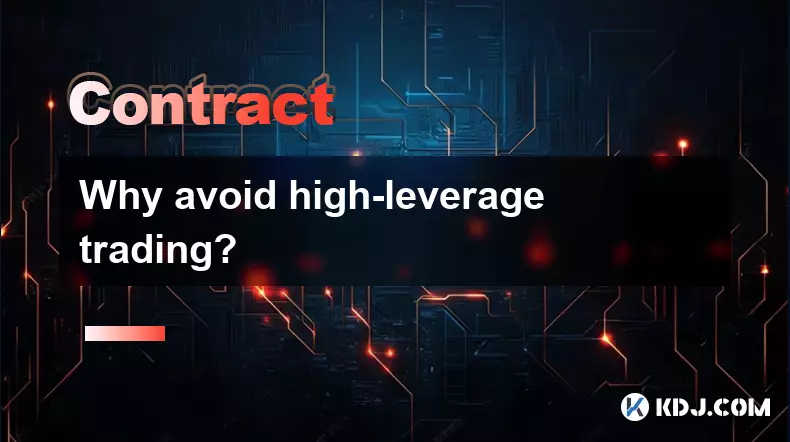
Why avoid high-leverage trading?
Sep 20,2025 at 04:00am
Understanding the Risks of High-Leverage Trading1. Leverage amplifies both gains and losses, making high-leverage positions extremely volatile. A smal...
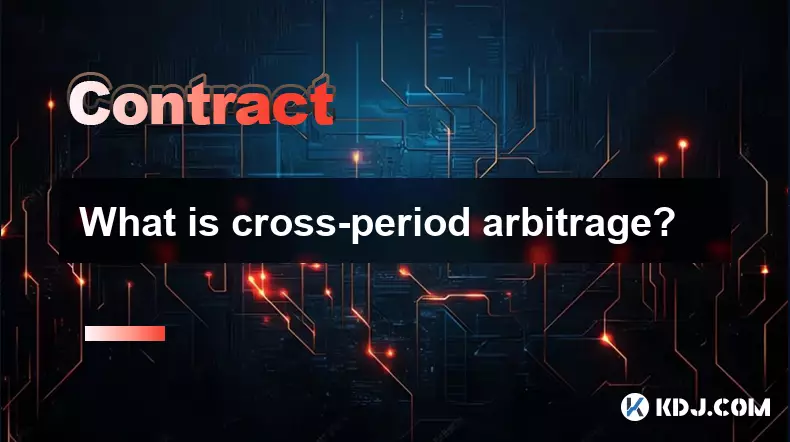
What is cross-period arbitrage?
Sep 20,2025 at 10:00pm
Understanding Cross-Period Arbitrage in the Cryptocurrency MarketCross-period arbitrage is a trading strategy that leverages price discrepancies of th...
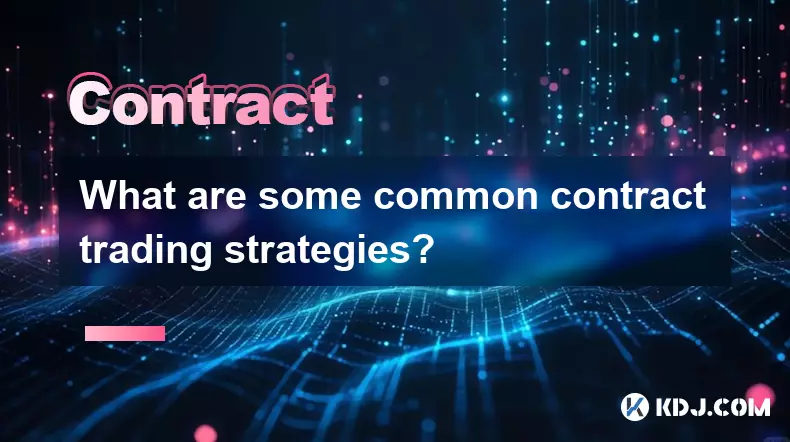
What are some common contract trading strategies?
Sep 21,2025 at 06:36pm
Understanding Contract Trading in the Crypto MarketContract trading has become a cornerstone of activity within the cryptocurrency ecosystem, allowing...
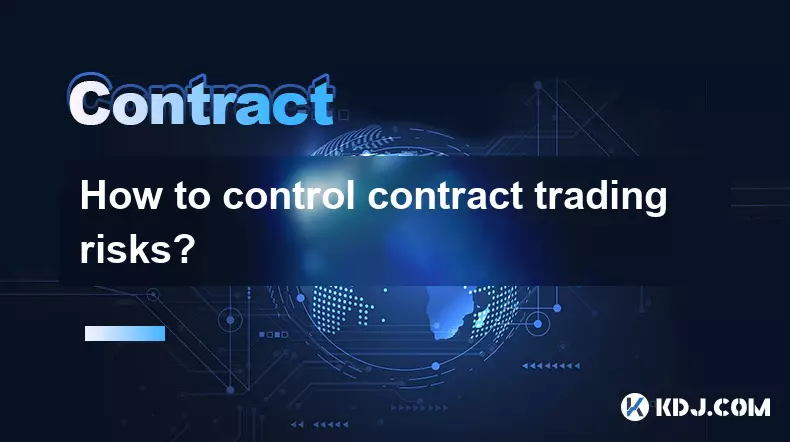
How to control contract trading risks?
Sep 20,2025 at 01:00pm
Risk Management Strategies in Contract Trading1. Set stop-loss orders for every position to automatically close trades when losses reach a predetermin...

What are the benefits of simulated trading?
Sep 21,2025 at 08:18pm
Understanding the Role of Simulated Trading in Cryptocurrency Markets1. Simulated trading allows users to engage with cryptocurrency markets without r...

What are some commonly used technical indicators in contract trading?
Sep 19,2025 at 05:54pm
Popular Technical Indicators in Contract Trading1. Moving Averages (MA) are among the most widely adopted tools in contract trading. Traders use both ...

Why avoid high-leverage trading?
Sep 20,2025 at 04:00am
Understanding the Risks of High-Leverage Trading1. Leverage amplifies both gains and losses, making high-leverage positions extremely volatile. A smal...

What is cross-period arbitrage?
Sep 20,2025 at 10:00pm
Understanding Cross-Period Arbitrage in the Cryptocurrency MarketCross-period arbitrage is a trading strategy that leverages price discrepancies of th...

What are some common contract trading strategies?
Sep 21,2025 at 06:36pm
Understanding Contract Trading in the Crypto MarketContract trading has become a cornerstone of activity within the cryptocurrency ecosystem, allowing...

How to control contract trading risks?
Sep 20,2025 at 01:00pm
Risk Management Strategies in Contract Trading1. Set stop-loss orders for every position to automatically close trades when losses reach a predetermin...
See all articles























